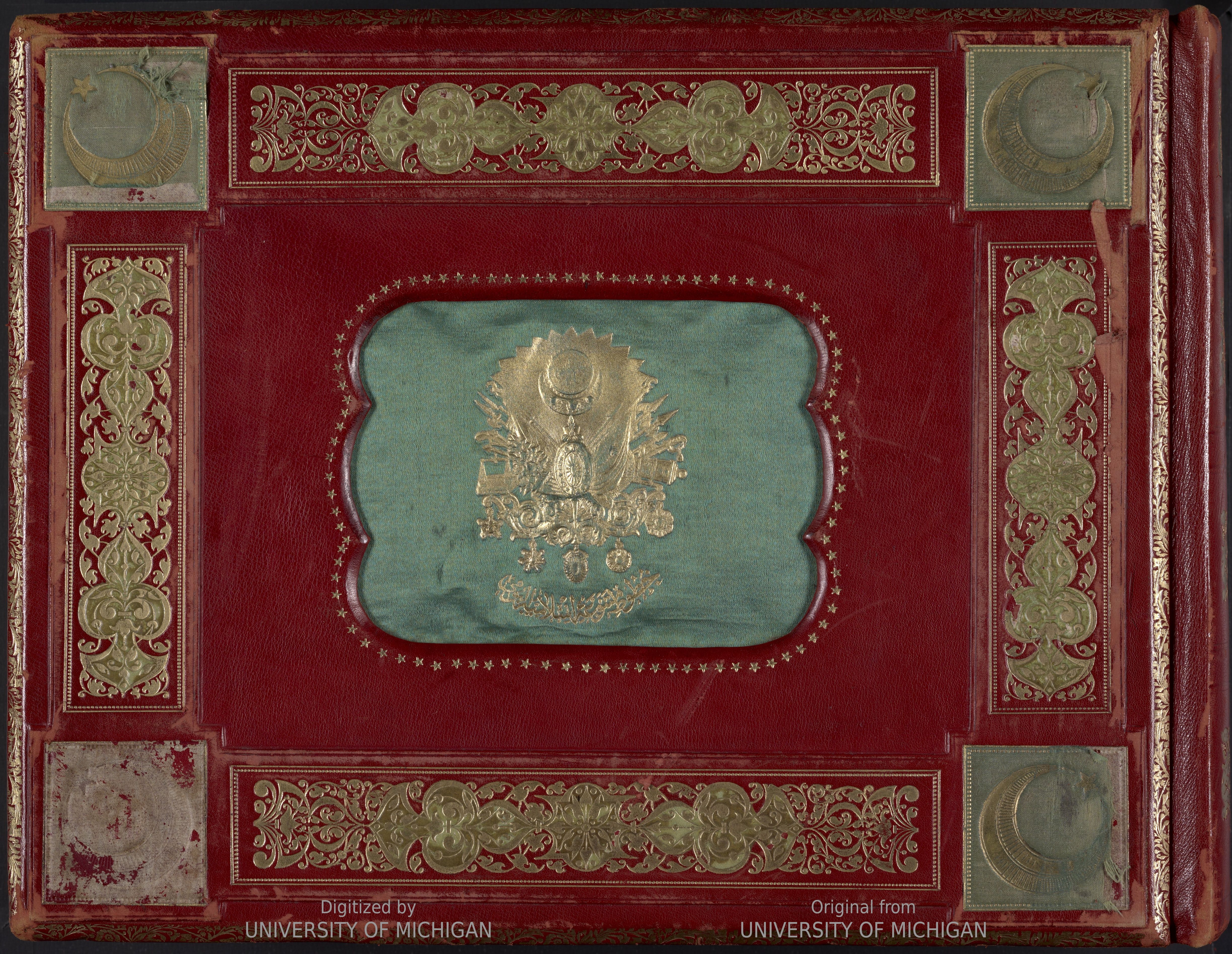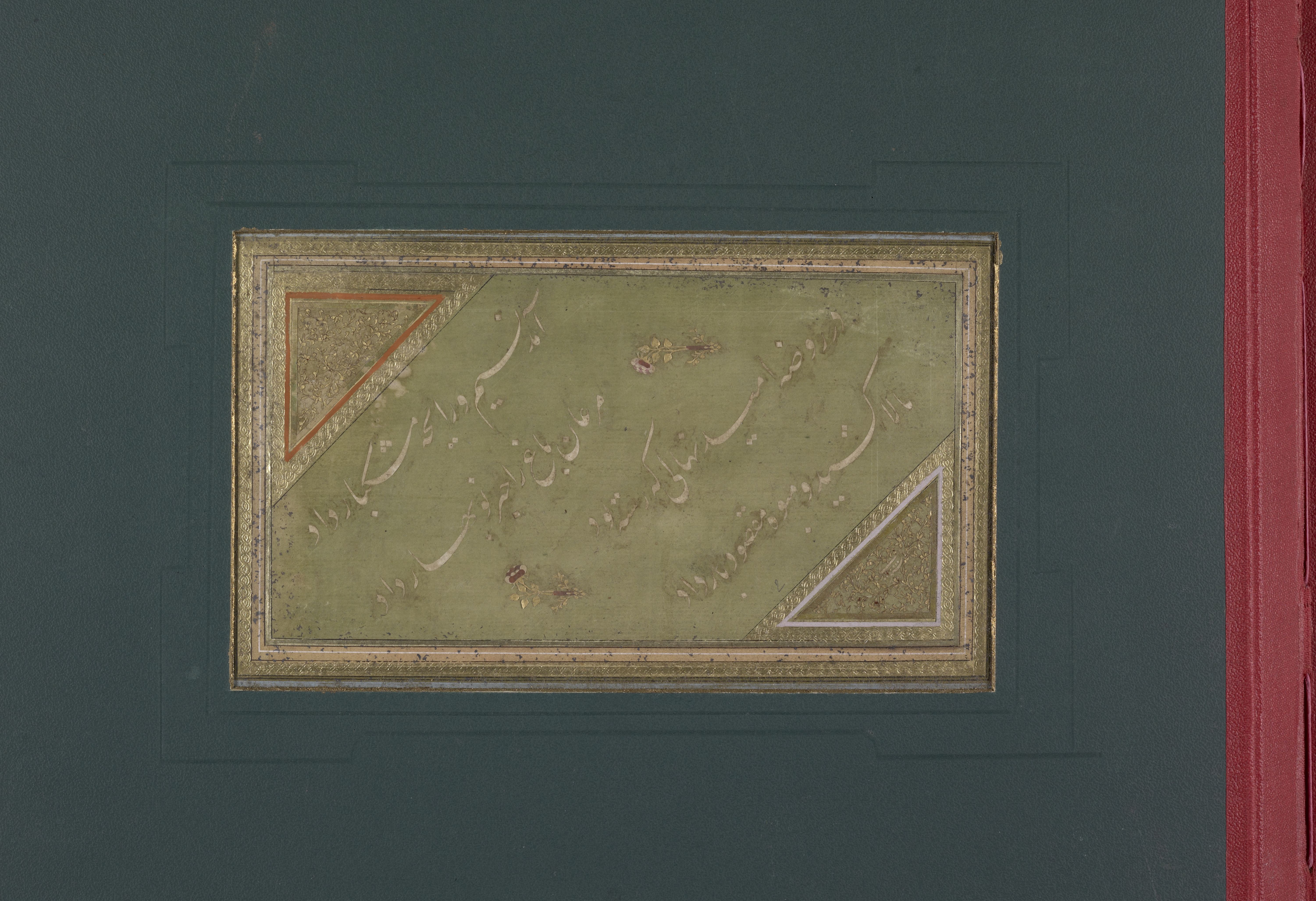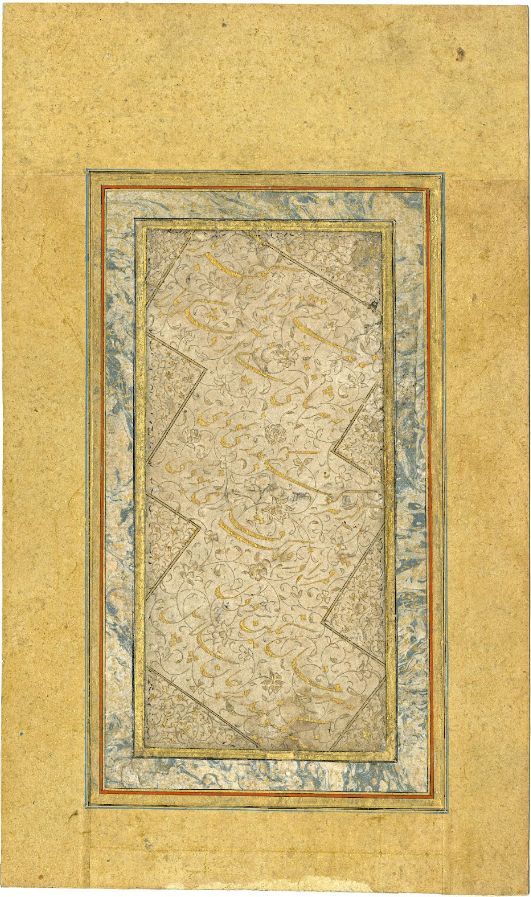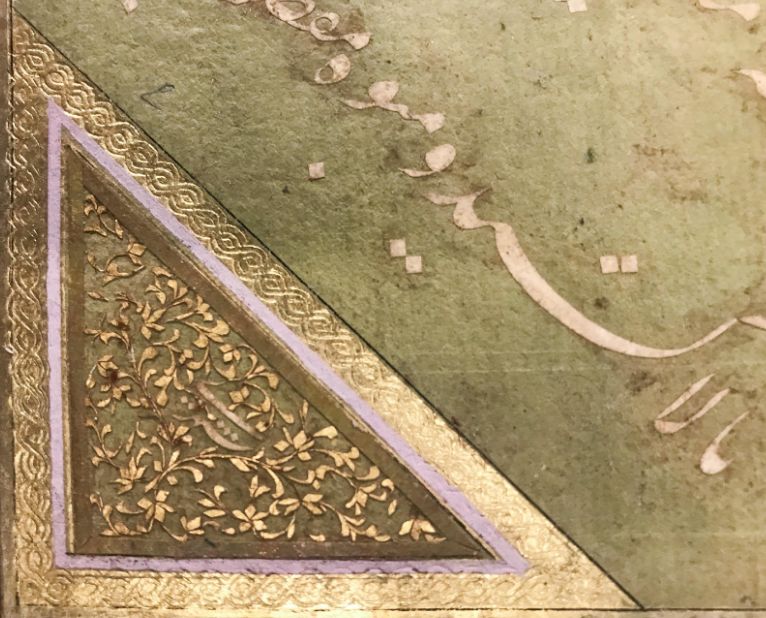This post is by Sumeyra Dursun, 2023 Heid Fellow, from her research in the Islamic Manuscripts Collection. Sumeyra is a doctoral candidate in the history of Islamic arts at Yildiz Technical University in Istanbul. See Sumeyra's other posts here.
*******************************************************************************
In another album of "Islamic Miscellaneous Calligraphies" (Khuṭūṭ-ı Mütenevviʿe-i İslāmiyye خطوط متنوعۀ اسلاميه) catalogued as Isl. Ms. 438 in the Islamic Manuscripts Collection at the University of Michigan Library, we encounter a découpage or cut-out calligraphic piece signed by the artist Şehrî (شهرى). The manuscript was acquired by the library in 1924 along with several hundred other manuscripts gathered in Istanbul that came to be known as the "Abdul Hamid Collection." More on that acquisition here.

Cover of the album of miscellaneous calligraphies catalogued as Isl. Ms. 438

Calligraphic découpage / cut-work piece in nastaʻlīq (talik) signed by the calligrapher, Şehrî. Fol.22a in Isl. Ms. 438, Islamic Manuscripts Collection
Although the art of découpage (ḳaṭʿı = قطع also qaṭʿī = قطعی or qaṭāʿī = قطاعی) — one of the most challenging among the Islamic arts of the book [1] — usually focused on floral compositions and garden scenes, calligraphic works were also made and sometimes presented to sultans as gifts. Faḫrī (فخرى) of Bursa, who lived in the late sixteenth, early seventeenth centuries, is one of the best known artists in this domain.

Cut-out calligraphy piece by Bursalı Fahrî (Fahrî of Bursa). From a private collection.
The community of artists serving within the palace, known as ehl-i hiref (أهل حرف), produced works in such fields as the arts of the book, jewelry, woodworking, textiles (embroidery and weaving), not to mention their literary and architectural activities. There were also many artists who were not registered with the ehl-i hiref. Starting with the seventeenth century, according to Metin And [2], this palace-centered artistic production was replaced by the group he dubbed çarşı ressamları (چرشی رساملری= bazaar painters), who produced works for the market. The traveler Evliya Çelebi writes of western visitors and ambassadors who came to Istanbul and commissioned manuscripts from these bazaar painters. The calligrapher Şehrî who signed the piece in Isl. Ms. 438 may be such an artist.
The works produced in the palace naḳḳāş-ḫāne (نقاشخانه = imperial atelier) and the approach to art exhibited by the bazaar painters were nourished by a common past. The origin and educational background of Maḥmūd Ghaznavī (محمود غزنوی), notably when he arrived from Ghaznī, remain unknown. Ghaznavī compared himself to Faḫrī of Bursa, claiming that his own works deserved higher praise. In his notes about Ghaznavī’s compilation entitled Tuḥfe-i Ghaznavī (تحفه غزنوی), Süheyl Ünver wrote that he was a good painter and découpage artist, excelling in thuluth, naskh, and ta‘līq calligraphy. [3]
We have scant information about Şehrī — although he is mentioned in some sources, his works are exceedingly rare. The piece bearing his signature in the album in the University of Michigan Library is thus of great significance.

Cut-out calligraphy piece with signature of Şehrî mounted in fol.22a of Isl. Ms. 438
The letters are carved with the meticulousness of a calligrapher and are so perfect that they appear to have been written with a pen. Written in taʿlīq (talik) script, the text comprises lines in Persian from a poem (ghazal) of the famous mystic poet Jāmī (d.1492). The lines read:
آمد نسیم و رایحه مشکبار داد
مرغان باغ را خبر نوبهار داد
در روضه امید نهالی که رسته بود
بالا کشید و میوه مقصود بار داد
"The wind came, bringing the scent of musk.
The wind informed the birds that spring was coming.
A sapling grew from the garden of hope, and now that sapling has grown into a tree.
When the tree bore its fruit, it fulfilled its purpose."
Motifs or roses were added in the remaining spaces of the work, which was applied on dark green paper as a “male” carving or positive cut-out (i.e. the letters were extracted from a sheet to be pasted elsewhere). The lower and upper corners of the panel, which is bordered by nested margins, are decorated with intricate motifs. The signature "شهرى" (“Şehrī”) appears among the foliate patterns in the lower corner.

Signature of Şehrî in corner decoration of calligraphic piece mounted in fol.22a of Isl. Ms. 438
The work is undated; however, it can be estimated that it was produced during the first half of the eighteenth century on the grounds of its calligraphic style, the decorations adorned with roses, and comparison with such works as Tuḥfe-i Ghaznavī — a masterpiece of the age.
A comprehensive history of the art remains to be written; this rare panel at the University of Michigan will make a significant contribution to the recognition of the eighteenth-century style of Islamic cut-out calligraphy.
[1] For more on this art (also referred to as papercut, cut-paper, cut-out, cut-work), see Filiz Çağman, “KATI‘ = قطع” TDV İslâm Ansiklopedisi v.25, pp.32-35 (available online) and in the comparative Iranian context, Barbara Schmitz, "CUT PAPER" Encyclopaedia Iranica v.VI, fasc.5, pp. 475-478 (available online) and Amélie Couvrat Desvergnes, "Cut-Out Calligraphy from the Fifteenth and Sixteenth Centuries: Discussion of Its Origins and Significance and Observations on the Techniques and Tools Used," Journal of Material Cultures in the Muslim World 2, 1-2 (2021): 3-31 (available online)
[2] Metin And, Osmanlı Tasvir Sanatları 2: Çarşı Ressamları, edited by Tülün Değirmenci and M. Sabri Koz, İstanbul: Yapı Kredi Yayınları, 2018.
[3] İsa Uğurlu, “Süheyl Ünver’in Gaznevî Mahmud ve Mecmuası Hakkındaki Notları,” Zemin 3 (2022): 276-290 (available online)